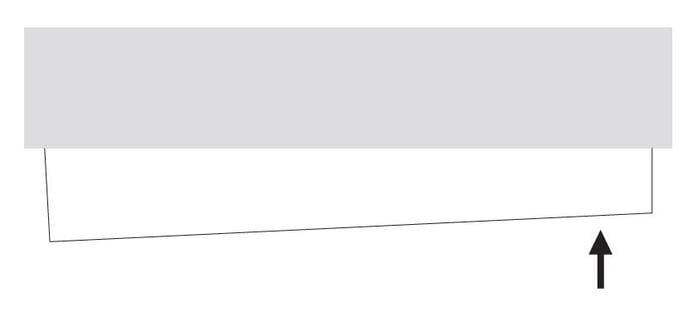The trend for wider and deeper cabinet drawers is continuing to grow. And we can see why. Originally only seen in lateral filing systems, wide and deep drawers are now found in residential applications, especially kitchens. Commercial applications include display and storage for retail, catering, industrial and
electronic and, of course, office files.
Drawer racking
When selecting the slides for your wide drawer project be careful to read the manufacturer’s technical details. Maximum drawer widths should be given for each type of slide; this is most likely to be described in the load rating and testing descriptions. If the slide has been tested on a drawer of 450mm wide, then it may not work well on your 1m wide project. The slide manufacturer should have tested each slide model to determine the maximum drawer width it will safely carry. Choosing slides based on the drawer width, as well as the load, is the best way to ensure good movement and reliable performance.
Drawer width is especially important in situations where the drawer box is wider than it is deep. This construction puts more stress on the drawer and slides, causing a halting and a racking or side to side movement.
We would generally recommend that the slide length is equal to or slightly longer than the drawer width. We have some slide products that have been specifically tested for wider drawer applications. Looser slide movements can accentuate this racking. This is caused by greater freedom within the slide and the force applied to the slides when a drawer is opened or closed with an offset pull or push by the user. We advise, where design restraints allow, that you use a central pull handle on wide drawers. Where two handles, or one very long handle exist, the temptation is to try and open the drawer from one side only. This puts a strain on the slides and will eventually lead to problems within the slide.

Drawer racking becomes less when the stiffness of the drawer is high, such as drawers with sheet metal base. Drawers with poor stiffness, such as file cabinets, typically exhibit more racking. Ultimately, the behavior of an application with unfavorable width/length ratio needs to be tested.
Inching
Inching or ball migration is a condition where the ball retainers in the slides move at different speeds
and distances causing them to get out of sync with each other and with the slide members that they
support. Inching is a common problem with the design of ball bearing slides that all manufacturers have to deal with. Accuride works continually on the design of the ball track shape to keep this problem under control. It is important that each set of balls roll effectively in their tracks and that the movement between the members and the ball retainers is always kept at a 2:1 ratio. We check and test the design of the ball track to maintain this finite shape and achieve a true single ball contact through the ball diameter so that true rotation of the ball bearings is realized.
Technical hint
It is always best to choose a slide that meets your drawer width requirements, even though the slide load rating may be greater than what is needed for the project.
